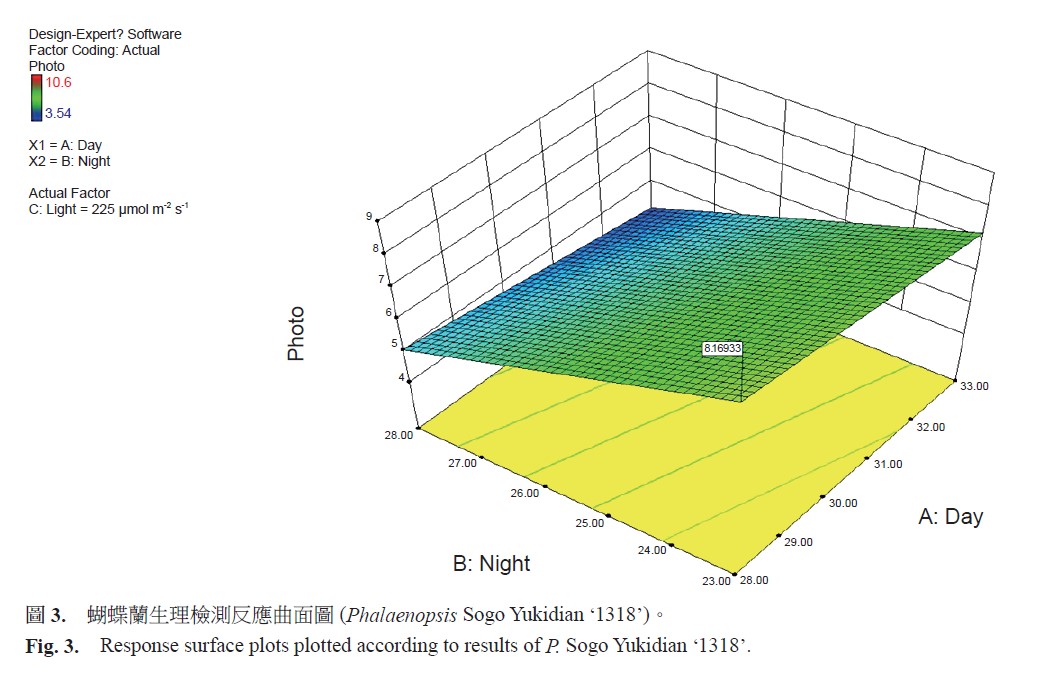All issues
Author:Jian-Cheng Ciou, Ting-Fang Hsieh, Jyh-Rong Tsay, and Ting-En Dai*
Abstract:
Phalaenopsis is one of the important export floricultural crops in Taiwan. It is mainly exported to the United States, Japan and the Netherlands. However, the primary factor accounting for the quality of seedlings has not been fully understood so that the physiological characteristics for its quality are not clear. Thus, no standards can be set up for an optimal growth conditions for the cultivated cultivars by growers. Attempt has been made for this study to develop a detection technique for examining the physiological characteristics of several Phalaenopsis cultivars and to use it as a service platform. With such, a better understanding of the optimal growth conditions, such as day and night temperatures and light intensity, in the vegetative and spike-forcing phases of Phalaenopsis plants can be reached. The information is needed to improve cultural practices for domestic production as well as to provide a reference management for countries that import these orchids. To reduce time and frequency for the examination, this study also designed a continuous carbon dioxide exchange system with multiple chambers for whole plants measurements by incorporating the response surface methodology. For cultivars of Phalaenopsis Sogo Yukidian ‘1318’, P. Sogo Plum ‘F2486’, P. Taida Smile ‘Taida Little Green’ and P. Nobby’s ‘Cat Nip’, the estimated optimal day and night temperatures were 28℃/23℃, 33℃/24℃, 33℃/27℃, and 33℃/28℃, respectively. The estimated optimum light intensity for cultivar P. Sogo Plum ‘F2486’ was about 100 μmol m-2 s-1, and for the rest of cultivars was about 225 μmol m-2 s-1. All these experimental data will be provided to growers for verification. Due to the differences between the simulated growth chamber and the natural or greenhouse cultivation environment in other countries, as well as batch tests caused by equipment limitation and the uniformity of plants, the developed measurement technique needs to be further improved and verified in the future.
Key words:Photosynthesis, Whole-plant measurement, Variety characteristics, Response surface methodology
Download:![]() PDF Links
PDF Links
- 1. Development of Tractor-Mounted Seedling Transplanter for Sweet Potato
- 2. Synergistic Effect of Additional Gas on the Toxicity of Phosphine to Sitophilus oryzae and Sitophilus zeamais (Coleoptera: Dryophthoridae)
- 3. Effects of Temperature and Solar Radiation on Growth Traits and Plant Elements in Purple Leafy Sweet Potato

 Submit your manuscript
Submit your manuscript
 Guide for authors
Guide for authors